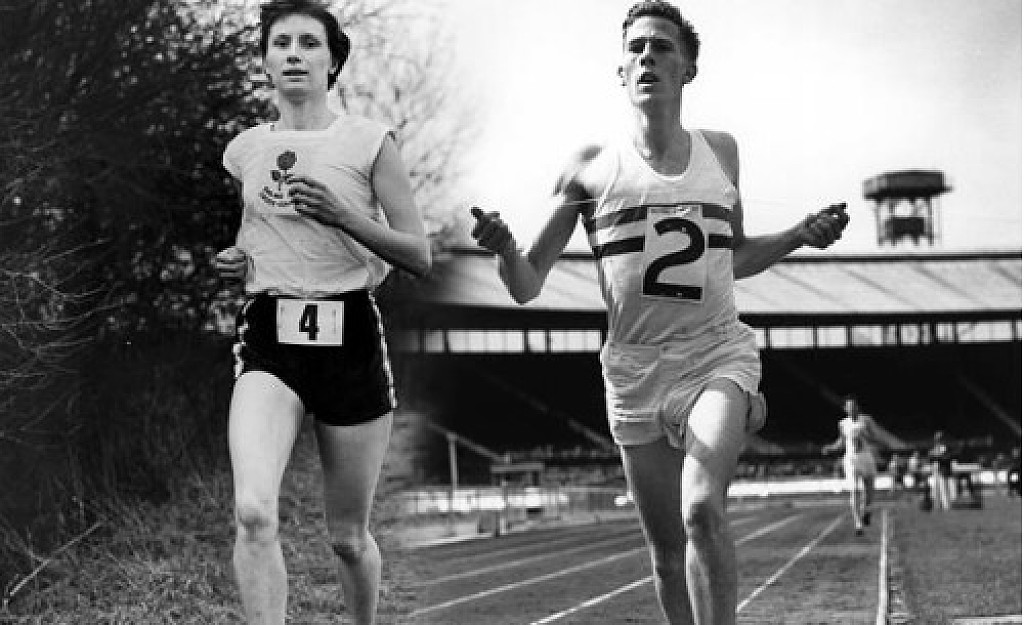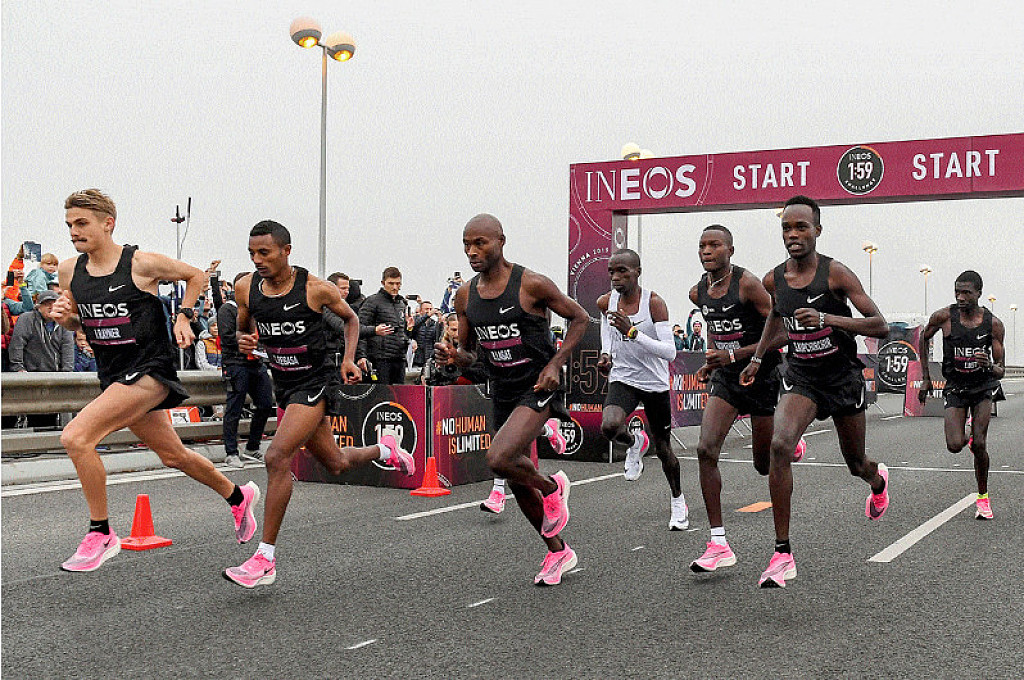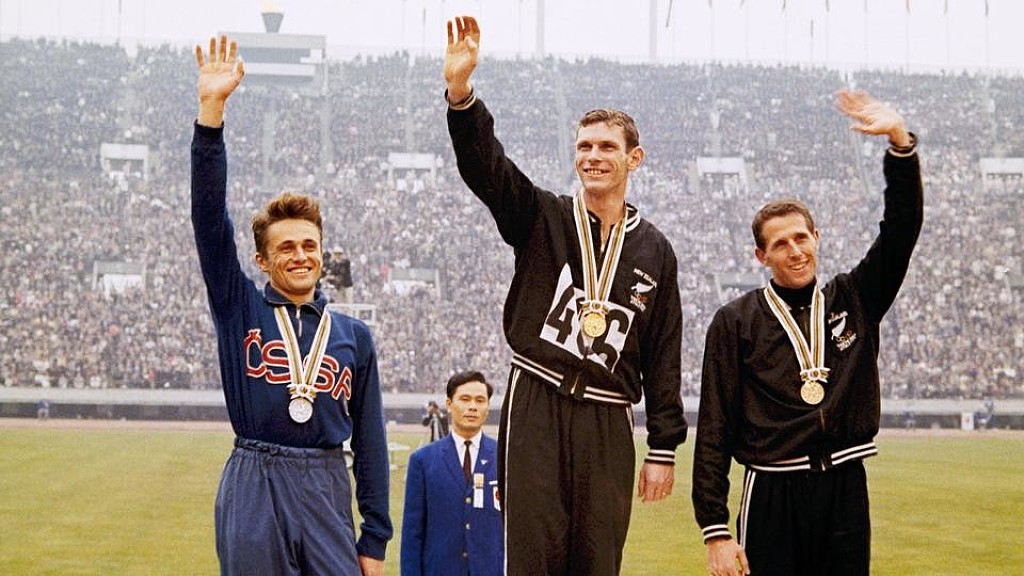Running News Daily
Top Ten Stories of the Week
12/21/2019
These are the top ten stories based on views over the last week.
Diane Leather and Roger Bannister – the similarities and differences of two trailblazers
The world reverberated with the news that Roger Bannister had become the first man to run the mile in less than four minutes on 6 May 1954. Twenty three days later, a landmark was achieved in the women’s mile when fellow Briton Diane Leather became the first to dip under five minutes – unheralded, and, at the time, without fanfare.
Bannister’s progress continued to top the sporting agenda as he beat his Australian rival, and by then world mile record-holder, John Landy at the British Empire and Commonwealth Games in Vancouver, before hoovering up the European 1500m title and retiring to start a stellar career in medical research.

Leather remained as a runner until 1961, but while she won two silver medals in the 800m at the European Championships, and captained the women’s team at the 1960 Rome Olympics, she never got the chance to run at her best distance in a major international championship.
Less than a month after Bannister had clocked 3:59.4 at the Iffley Road track in Oxford, Leather recorded 4:59.6 at the Alexander Sports Ground in Birmingham – reacting with the words “Oh good. At last” – and the following year she ran 4:50.8 and then 4:45.0, which remained a world record until 1962.
By then Leather – who had also set an 800m world record of 2:09 in 1954 – had retired, aged 27. Women’s records for the mile were not ratified until 1967, and she never had the opportunity to race over her preferred distance at an international championship.
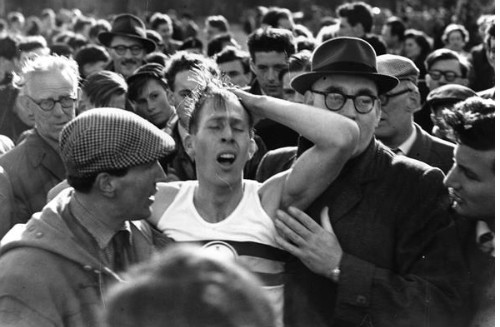
Both runners were honoured at the World Athletics Heritage Mile Night in Monaco last month with awards being made to Leather’s daughter, Lindsey Armstrong, and Bannister’s daughters Erin Bannister-Townsend and Charlotte Bannister-Parker.
The contrast in recognition for two great athletes who both died in 2018 was mirrored, oddly, in a contrast in recognition within their own families.
Lindsay Armstrong had no idea that her mum had been an athlete, or indeed a world record-holder, until she was 11.
“She didn’t tell me herself,” recalled Lindsay, who runs Shakespeare’s Schoolroom and Guildhall in Stratford-upon-Avon. “I learned about it when I found some scrapbooks that one of her brothers had kept. They were on the bottom shelves somewhere in the sitting room, just tucked away.
“I didn’t know what to do about it – it was almost as if I was being naughty!
“In the end it wasn’t really such a big conversation. She said it was just something she used to do.
“I don’t want you to get the wrong idea. She wasn’t shy and retiring. But it was just something she’d done.
“On the day she broke five minutes for the mile, she had broken an 800m record earlier that day – it may have been a national record. So she had two great legs on her.
“She ran in the Olympics in 1960, but again they still didn’t allow her to run the mile. There was nothing further than the 200 until 1960 and then they were allowed to do the 800m. So she was the women’s team captain but she didn’t get to the final. Because, you know, it was six years past her prime. We have still got her Olympic jacket at home. She stopped soon after that.
“She didn’t talk about her athletics. I know that in later years according to people that knew her then that she felt somewhat slighted, and instead of letting it upset her she just turned away from athletics earlier than she would have done.
“But she did a lot of officiating in athletics after her career. So she didn’t really turn away from the sport. She always loved it.
“She was an extraordinary athlete. She ran the 400m, she ran the relay, she was a cross country champion. She did a huge range of distances.
“She was a chemist and she went on to be a child social worker. That was her passion. She was more than just an athlete. She was an extraordinary woman who really did change lives.
“She was beautiful – so beautiful. You could see it in the film we just watched. And it was really lovely to see. We were so proud of her. To be here with all these other extraordinary runners – she would have loved to be here.”
By contrast, Bannister’s daughters Charlotte, who is a Church of England Minister at the University Church in Oxford, and Erin, an accomplished painter, recalled their father introducing athletics into their life from the point where they could remember.
“I think it would be fair to say that my father was a pretty humble man throughout his life considering what he achieved both medically and athletically,” said Charlotte.
“But in terms of us being aware that he was a runner and that running was important was something that happened right from the start of my very consciousness.
“We were encouraged to run every day. There was a little park outside our house which was a square, and he would run every day of his life, right until he had a car accident and he no longer could. But it was deeply engrained within our childhood. Much more… why it was good for you…
Her sister continued the narrative: “Why he loved to be outside… being outdoors, and including other sports, including climbing and walking, and tennis, and sailing, and a whole range of sports. He was always trying things that weren’t necessarily to do with athletics. So things like sailing were quite dangerous, but they gave us enormous fun.”
Charlotte recalled: “He would train us to get off the starting line. He just loved watching people run, and he would come to our school sports days and he would look around the field and he would say that young boy or that young girl, they have got great style.
“And then of course he was broadcasting at the Olympics as a journalist – that was one of the times we were allowed to watch television, to see the Olympic Games and the Commonwealth Games.
“He didn’t generally talk about his athletics, but during anniversaries of his achievements he would sometimes talk about them, and he would talk about how his father had taken him to see athletics very early on.
“I remember going to Crystal Palace with him a lot. And then of course when he was Chairman of the Sports Council he would have to attend a lot of sporting events and if my mother couldn’t make it he would take one of us children.
“And then of course there were interviews. When something happened in the athletics world, he used to get rung up by the BBC and asked to comment on things to do with drugs, apartheid, politics…”
Both recalled travelling to Vancouver in 1967 for the unveiling of a statue depicting the decisive moment of the Vancouver Mile race, when Landy looked back inside him as their father was making his decisive burst of speed in the lane outside.
Charlotte added: “We used to have very interesting Sunday lunches, where there were always discussions around politics, athletics and sport, and it would be a summary of the week’s news and what was going on in the wider world. So there was no sense of not being involved in what was his passion – or of him not passing on his passion to us.”
(12/15/19) Views: 492World Athletics
Nike’s Fastest Shoes May Give Runners an Even Bigger Advantage Than First Thought
Anyone who saw Eliud Kipchoge of Kenya break the two-hour marathon barrier in October very likely saw something else, too: the thick-soled Nike running shoes on his feet, and, in a blaze of pink, on the feet of the pacers surrounding him.
These kinds of shoes from Nike — which feature carbon plates and springy midsole foam — have become an explosive issue among runners, as professional and amateur racers alike debate whether the shoes save so much energy that they amount to an unfair advantage.
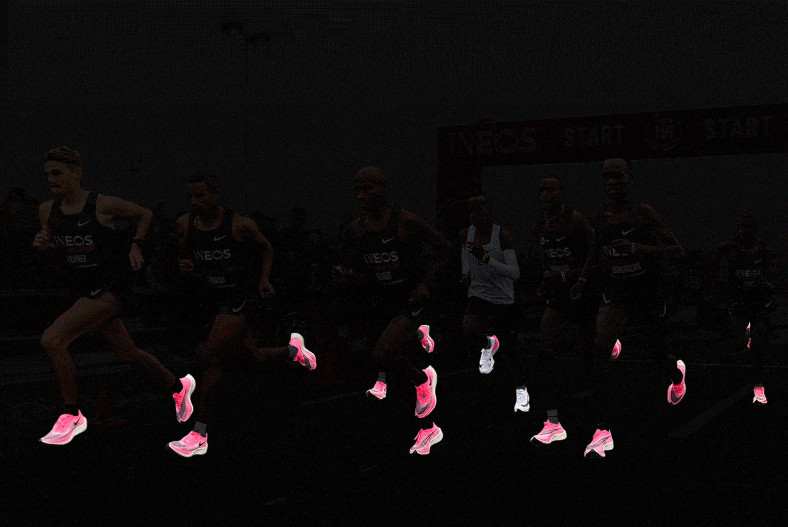
A new analysis by The New York Times, an update of the one conducted last summer, suggests that the advantage these shoes bestow is real — and larger than previously estimated.
At the moment, they appear to be among only a handful of popular shoes that matter at all for race performance, and the gap between them and the next-fastest popular shoe has only widened.
We found that a runner wearing the most popular versions of these shoes available to the public — the Zoom Vaporfly 4% or ZoomX Vaporfly Next% — ran 4 to 5 percent faster than a runner wearing an average shoe, and 2 to 3 percent faster than runners in the next-fastest popular shoe. (There was no meaningful difference between the Vaporfly and Next% shoes when we measured their effects separately. We have combined them in our estimates.)
This difference is not explained by faster runners choosing to wear the shoes, by runners choosing to wear them in easier races or by runners switching to the shoes after running more training miles. In a race between two marathoners of the same ability, a runner wearing these shoes would have a significant advantage over a competitor not wearing them.
The shoes, which retail for $250, confer an advantage on all kinds of runners: men and women, fast runners and slower ones, hobbyists and frequent racers.
Many other brands, including Brooks, Saucony, New Balance, Hoka One One and Asics, have introduced similar shoes to the market or plan to. These shoes may provide the same advantage or an even larger one, but most do not yet appear in sufficient numbers in our data to measure their effectiveness.
What makes these shoes different is, among other things, a carbon-fiber plate in the midsole, which stores and releases energy with each stride and is meant to act as a kind of slingshot, or catapult, to propel runners. The shoes also feature midsole foam that researchers say contributes to increased running economy.
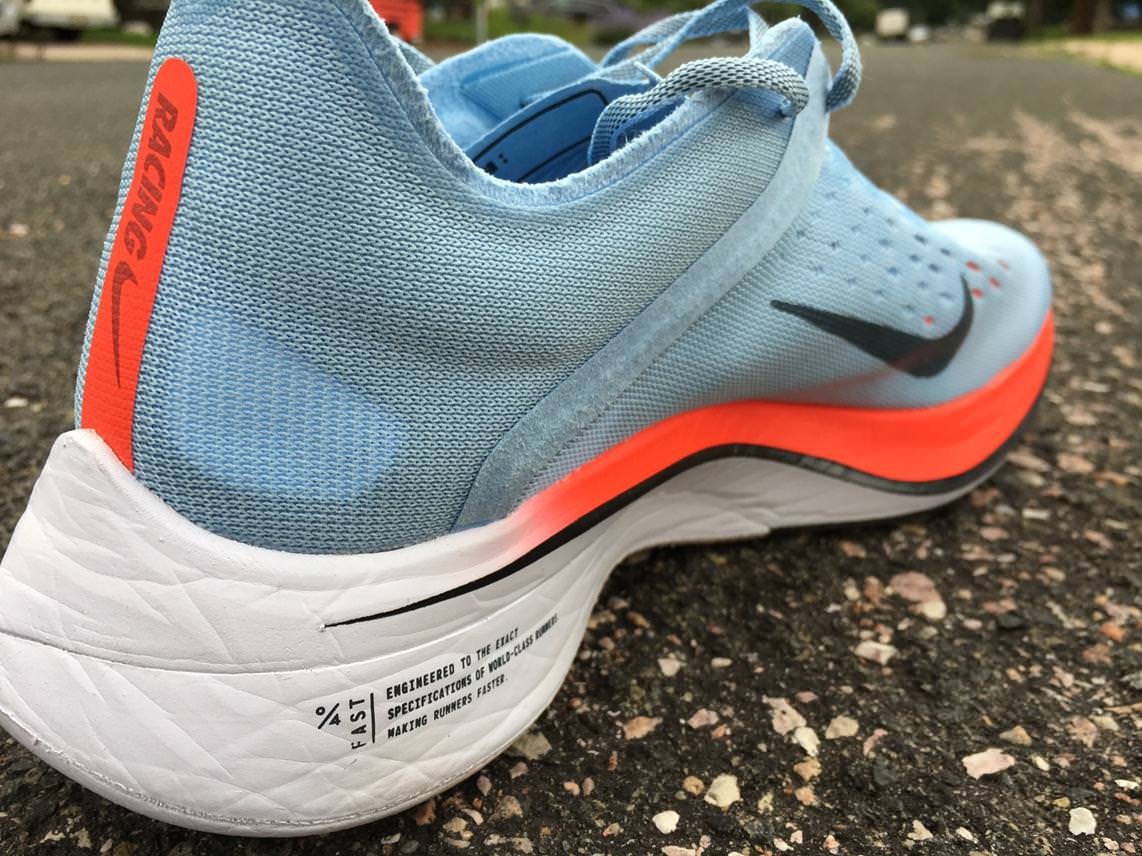
Whether the shoes violate rules from track’s governing body, World Athletics, depends on how one interprets this sentence from its rulebook: “Shoes must not be constructed so as to give athletes any unfair assistance or advantage.” It does not specify what such an advantage might be.
“We need evidence to say that something is wrong with a shoe,” a spokesman for the governing body, then called the I.A.A.F., told The Times last year. “We’ve never had anyone bring some evidence to convince us.”
In an announcement earlier this year, the group said, “It is clear that some forms of technology would provide an athlete with assistance that runs contrary to the values of the sport.” It has since appointed a technical committee to study the shoe question, and to make a report with recommendations. (The report was originally intended to be released to the public by the end of the year; it will now reportedly be released in 2020.)
When we asked Nike last year about whether its shoes might violate I.A.A.F. rules, a spokesman said the shoe “meets all I.A.A.F. product requirements and does not require any special inspection or approval.”
Last Thursday, the company said in a statement, “We respect the I.A.A.F. and the spirit of their rules, and we do not create any running shoes that return more energy than the runner expends.”
There is no such thing as a large-scale randomized control trial for marathons and shoes, but there is Strava, a fitness app that calls itself the social network for athletes. Nearly each weekend, thousands of runners compete in races, record their performance data on satellite watches or smartphones, and upload their race data to the app. This data includes things like a race name, finish time, per-mile splits and overall elevation profile. And about one in four races includes self-reported information about a runner’s shoes.
In all, this data includes race results from about 577,000 marathons and 496,000 half marathons in dozens of countries from April 2014 to December 2019.
How we measured the shoes’ effect
[These approaches are essentially identical to the ones The Times used last summer. See that article for more examples and methodological details.]
We measured the shoes’ performance using four different methods — each with its own strengths and flaws:
1. Using statistical models2. Studying groups of runners who ran the same pair of races3. Following runners as they switch shoes4. Measuring the likelihood of a personal record in a pair of shoes
None of these approaches are perfect, but they all point to the same conclusion: Something is happening in races with the Vaporfly and Nike Next% shoes that is not happening with most any other kind of popular shoe.
Besides race times and the names of shoes, we also have data on runners’ gender and approximate age. For some of the more serious runners, we have detailed information about their training volume in the months leading up to a race. We also know about the weather on race day.
When we put this information into a statistical model, times associated with Vaporfly and Next% shoes are a clear outlier — about 2 percent faster than with the next-fastest shoe. The model estimates the effect of wearing these shoes compared with the effect of wearing other shoes.
No statistical model is perfect, and it’s possible that runners who choose to wear Vaporfly or Next% shoes are somehow different from runners who do not. Regardless of the decisions that went into this model — even when trying to control for runners’ propensity to wear the shoes in the first place — the outputs were similar.
Strava is very popular among runners. At last year’s Berlin Marathon, for example, more than 10,000 runners uploaded race information to Strava, and this year, more than 14,000 did. Crucially for our purposes, about a thousand of those runners ran both races, and a subset of them reported racing in different shoes.
We could then examine the change in performance of two similar runners — people with similar race performances and, ideally, training regimens — and compare the improvement of a runner who switched shoes with a runner who did not. In Berlin, runners who switched to Vaporfly or Next% shoes improved their times more than runners who did not, on average.
For two athletes and a single pair of races, this might not tell us much. But in our data, there are thousands of instances when pairs of runners ran in the same two races.
When we perform this calculation for every pair of races in our data and measure the effect of switching to any kind of popular shoe, we see that runners who switch to these Nike shoes improved significantly more than runners who switched to any other kind of shoe. No other shoe comes close to having the same effect.
More than 110,000 athletes uploaded data for more than one marathon, and about 47,000 uploaded data for three or more marathons. The Strava data allows us to follow these repeat racers over time and as they change shoes.
When we aggregate the change in race times for runners the first time they switch to a new pair of shoes, runners who switched to Vaporflys or Next% shoes improved their times more than runners who switched to any other kind of popular shoe.
Race times are, in many ways, a crude way to measure performance. One marathon may be hilly or full of sharp turns; others may be flat and straight. Weather, too, is important, with higher temperatures typically resulting in slower times. And yet race times are how runners qualify for prestigious races, like the Boston Marathon, and most runners know their personal best times by heart, regardless of whether the race they ran was flat or hilly, on a hot day or a cold one.
We can follow the runners in our data with this measure in mind, testing whether a runner’s fastest time is more likely when he or she switches to any kind of shoe.
Someone can run a personal best for all kinds of reasons unrelated to shoes. A runner may train more, execute a better strategy on race day or run an easier course. Regardless, we found that runners who switched to these shoes were more likely to run their fastest race than runners who switched to any other kind of popular shoe.
(12/16/19) Views: 390Kevin Qealy and Josh Katz
Des Linden will race the U.S. Olympic Trials and the Boston Marathon in 2020
Des Linden was undecided whether to race the Feb. 29 U.S. Olympic Marathon Trials as recently as a month ago. But now Linden, the 2018 Boston Marathon winner, is not only committed to trials but also the April 20 Boston Marathon.
It would be, at 51 days, by far her shortest break between marathons, which has so far included 19 marathons dating to 2007. She’s 36 years old, and it may be her last Olympic cycle.
“I only have so many more chances at Boston. I love being there. Obviously, the Olympics [window] is closing down as well,” she said. “I like the trials and the competitive way we pick our team. I can’t imagine, at this point, watching either of those races and feeling like I had no effect on either outcome.”
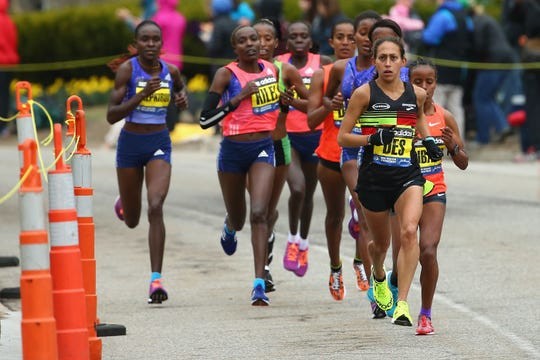
If Linden does make the Olympic marathon team — by placing top three at trials in Atlanta — she would be in line to race four marathons over a little more than nine months when including last month’s New York City Marathon.
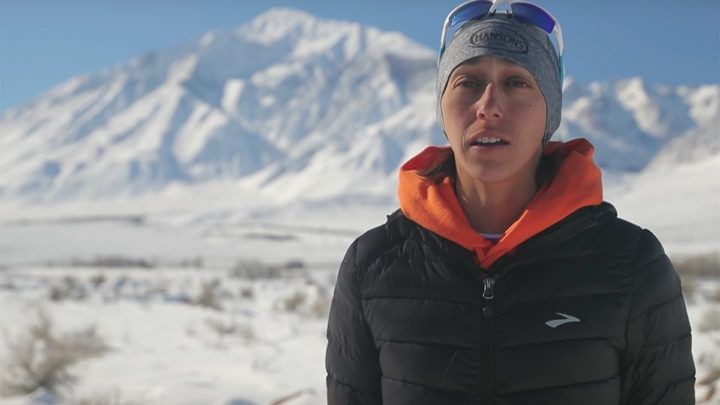
Ethiopian Lelisa Desisa and American Sara Hall ran the New York City Marathon on Nov. 3, 29 days and 35 days, respectively, after racing the world championships and Berlin Marathon. Neither finished New York, however.
This past August, when Linden committed to the New York City Marathon, she added that she might not race the trials. After her performance in New York — the top U.S. woman in sixth place — she decided she was ready for the trials-Boston double, which she had been considering since placing fifth at this past April’s Boston Marathon.
As far as how it will impact her trials build-up, Linden said her team will re-evaluate the process weekly. She hasn’t committed to a pre-trials half marathon.
“We’re obviously aware of what’s down the line, so we’re trying to get as much quality as we can without going too deep into the well,” she said. “It’s certainly going to be out there, but we’re trying to run well at both and not say, ‘This isn’t going well,’ and just train through it.”
Linden has been treating every marathon as if it could be her last. She has been incredibly consistent, placing no worse than eighth in her last 11 marathon starts dating to 2013.
Neither of Linden’s previous Olympic experiences was especially memorable. She dropped out of her first one in 2012 with a stress fracture in her femur. She was seventh in Rio, missing a medal by less than two minutes. The Kenyan-born gold and silver medalists were later busted for EPO and are serving lengthy doping bans.
“I don’t feel like I have anything to prove and anything unfinished,” at the Olympics, Linden said in August. “Quite frankly, the last experience is a hard sell to get back out there to try to compete for medals when you’re not even really sure what the field is all about. It’s a little bit difficult to be excited about that with the way we are about the [World Marathon] Majors. People investing in anti-doping have really been solving that problem [at the majors]. It’s a little tricky [at the Olympics], but certainly representing your country is special.”
Linden is the most experienced of a deep group of U.S. Olympic marathon hopefuls after the recent retirement of four-time Olympian Shalane Flanagan.
(12/17/19) Views: 276Peter Snell has died in Dallas. He was a three-time Olympic champion and world mile record-holder
Three-time Olympic champion and world mile record-holder Peter Snell has died in Dallas. He was aged 80.
Snell, who is regarded as one of the greatest middle-distance runners, won the 800 meters at the 1960 Rome Olympics aged 21, and the 800-1,500 double at the 1964 Tokyo Games.

He was the first man since 1920 to win the 800 and 1,500 at the same Olympics. No male athlete has done so since.
Snell also won two Commonwealth Games gold medals in the 880 yards and mile at Perth in 1962.
He twice held the mile world record, and held world records in the 800 meters, 880 yards, 1,000 meters, and the 4x1-mile relay.
Snell's death was confirmed by family friend and New Zealand sports historian Ron Palenski, who heads New Zealand's Sport Hall of Fame.
“It is very sad news, a grievous loss for New Zealand,” Palenski said. “In terms of track and field, he is probably the greatest athlete New Zealand has had.”
Snell was coached by Arthur Lydiard, an innovator who was regarded as one of the world’s finest coaches of middle and long distance athletes. Lydiard also coached Murray Halberg to win the 5,000 meters at Rome in 1960.
Snell was the best miler of his generation, at a time when the mile was the blue riband event of world athletics. He began immediately after Roger Bannister's epoch-making sub-four-minute mile and while the glow of that achievement still suffused the sport.
In his physique he was unlike milers of the time: Snell was strong and powerful — more like a 400-meter runner — and not like the mostly lithe athletes who vied for world supremacy over the mile.
His stride was so powerful he often scarred the tracks on which he ran, kicking up puffs of debris, especially on grass or cinder tracks. Lydiard's training — based on massive mileage mostly on the road rather than the track — gave him enormous stamina but he also had unusual speed.

Snell's friend and training partner, Olympic marathon bronze medalist Barry Magee said “there will never be another New Zealand athlete like him.”
“He won three Olympic gold medals, two Commonwealth Games gold medals, and broke seven world records. He was the best-conditioned athlete of his time.”
Snell’s wife, Miki, said he died suddenly at his home in Dallas around noon on Thursday. He had been suffering from a heart ailment and required a pacemaker for several years.
Snell’s athletics career was relatively short. He retired in 1965 to pursue educational opportunities in the United States.
"Peter Snell was like a god to me," says MBR founder Bob Anderson. "I started running in February 1962 and Peter was my hero. I met him at one of our National Running Weeks in the early 80's and it was like meeting a rock star."
Snell graduated with a Bachelor of Science degree in human performance from the University of California, Davis, and later with a Ph.D. in exercise physiology from Washington State University.
He became a research fellow at the University of Texas Southwestern Medical Center in 1981, later becoming director of the university's Human Performance Center.
Snell was knighted by New Zealand in 2009. A statue in his honor stands at Cooks Gardens, Whanganui, near his birthplace of Opunake, where he broke the mile world record for the first time in 1962.
(12/13/19) Views: 177Associated Press
An 84-year-old Canadian man, Roy Jorgen Svenningsen, became the oldest person to ever run a marathon in Antarctica as he completed the Antarctic Ice Marathon
The senior runner, Roy Jorgen Svenningsen, was not the only marathoner to set a record at the extreme running event as this year's winner, William Hafferty of the United States, clocked a new record time coming in at an impressive 3 hours, 34 minutes and 12 seconds.
Runners braved windy, yet sunny, conditions as they made two laps around the Union Glacier exploration camp just 965km from the South Pole.
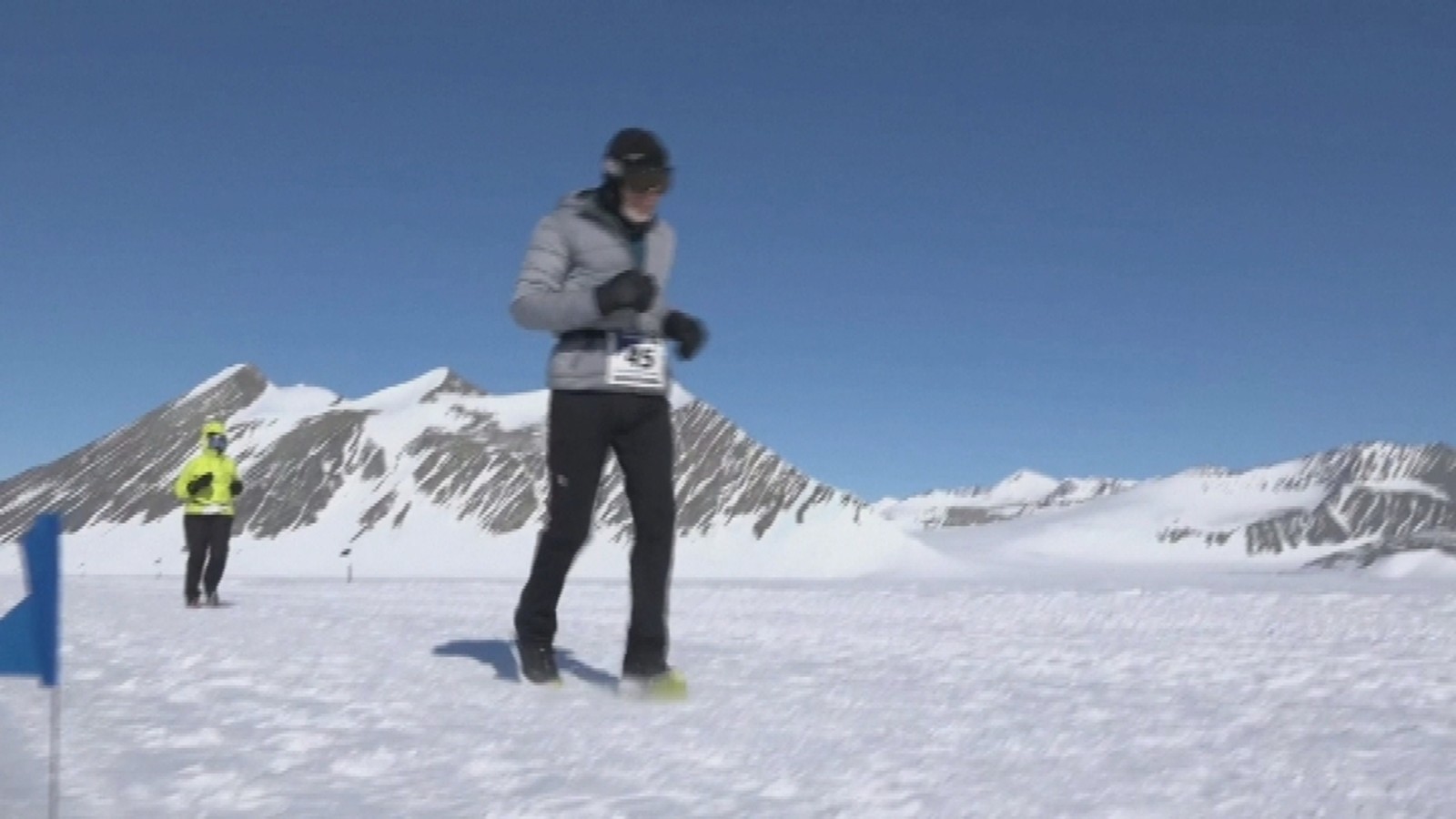
The first woman across the finish line was Lenka Frycova from the Czech Republic with a time of 4 hours, 40 minutes and 38 seconds.

There were three Irish runners, with James Murphy first across the line, finishing fifth overall, in a time of 4:21:15, while Sean O'Hagan finished in 5:30:46 and Paul Grealish in 6:42:37.
But it was the most senior of the runners that inspired most, when Svenningsen crossed the line at 11 hours, 41 minutes and 58 seconds.
Race organisers said it made him the oldest person to ever complete a marathon on the continent.
They also said Svenningsen, who will soon turn 85, has completed more than 50 marathons around the world having run his first in Calgary, Canada back in 1964.
(12/16/19) Views: 104British marathon champion Charlotte Purdue clocks 68:45 in Japan for her second fastest ever time winning the Sanyo half-marathon on Sunday
Britain’s Charlotte Purdue won the half-marathon in 68:45 for the British marathon champion’s second fastest ever time over 13.1 miles and her quickest on a record-eligible course (behind her 68:08 recorded at this year’s Great North Run).
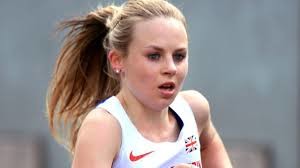
It is over a minute quicker than she ran at the Kagawa Marugame International Half Marathon in February.
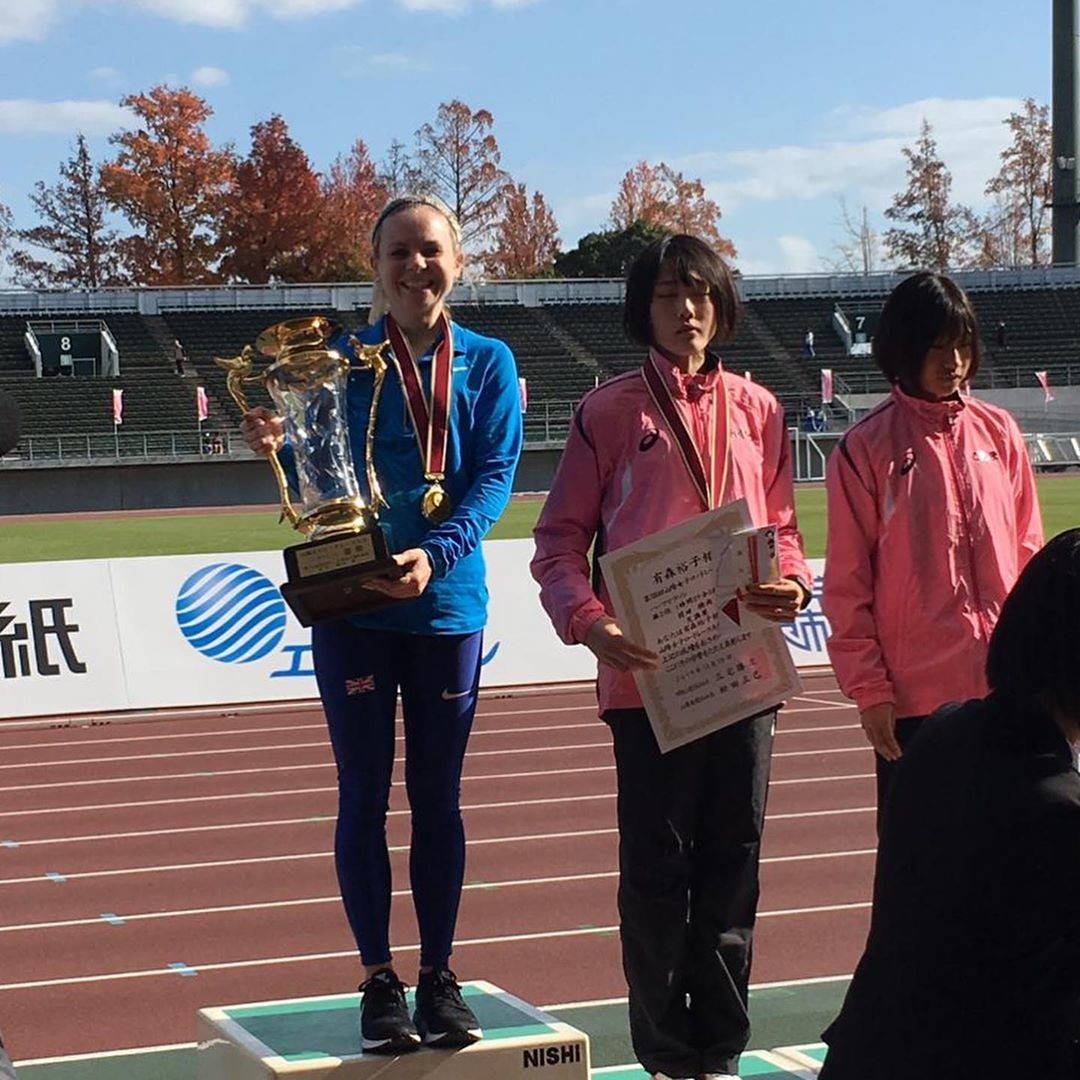
Purdue beat, among others, Japanese Olympic marathon trials winner Honami Maeda (69:08).
Sara Miyake was third in 69:23, while Canada’s Rachel Cliff set a national record of 70:06 in sixth.
(12/16/19) Views: 67Eliud Kipchoge believes he can break the marathon world record in London
Eliud Kipchoge believes he could break his own world record when he bids to become the first able-bodied athlete to win the Virgin Money London Marathon for a fifth time next April.
The Kenyan superstar, who created history with his groundbreaking run of 1:59:41 in October, has announced he will race in the UK capital once again in 2020 for the 40th edition of an event he has won four times in four appearances.
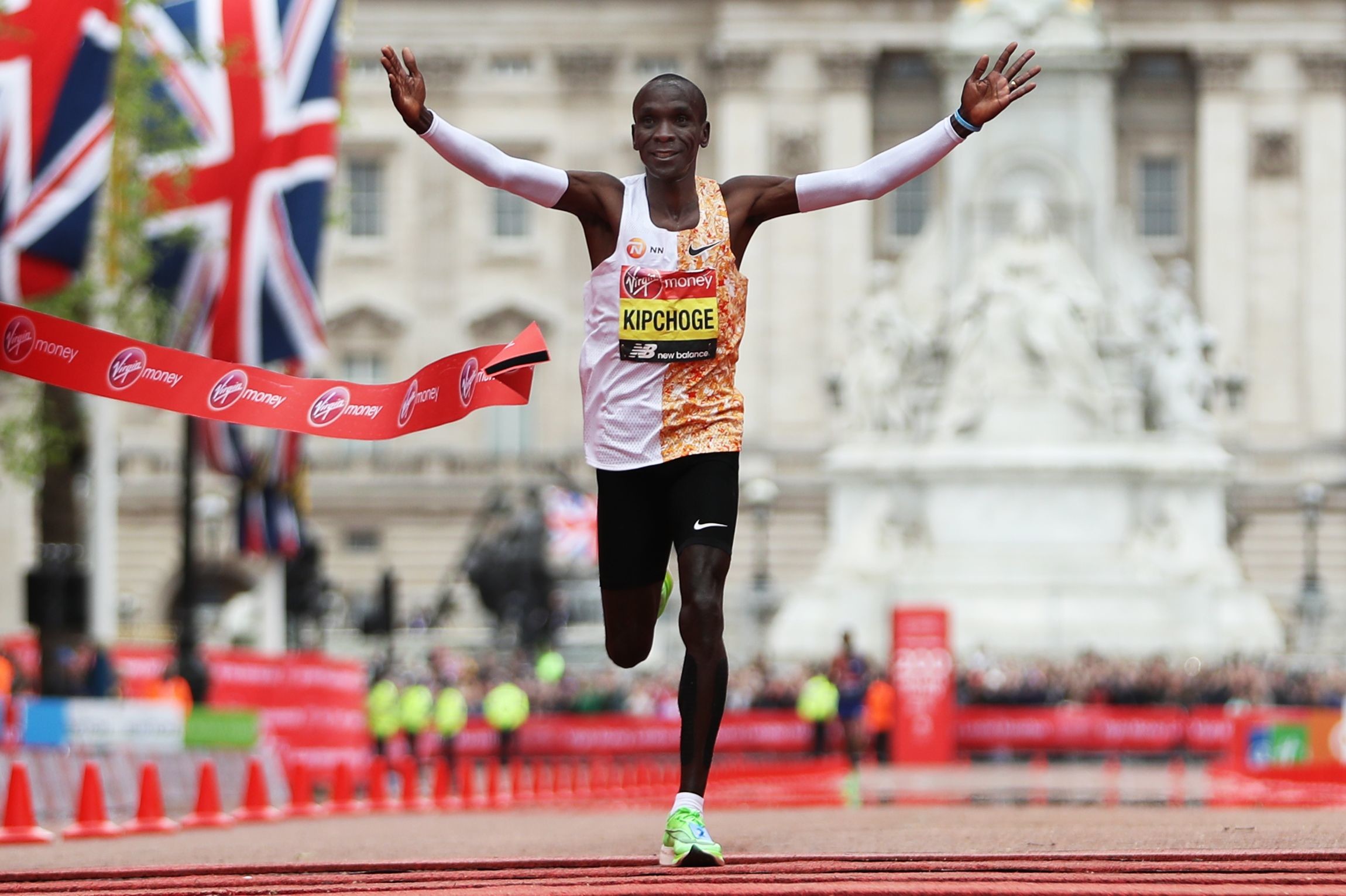
Kipchoge’s sub-two-hour run in Vienna was not eligible to be considered for world record purposes, given the controlled conditions in which it was achieved, but he can see the two-hour barrier being broken in a big city marathon in the not-too-distant future.
For now, the official world record stands as the 2:01:39 which the Olympic champion ran in Berlin last year and, though he insists there is plenty of training to do between now and the London race day of April 26, he won’t rule out going quicker come springtime.
“Absolutely,” was Kipchoge’s answer when asked if he could create yet more history in London, where he won in a time of 2:02:37 earlier this year which broke his own course record. “It is possible.”
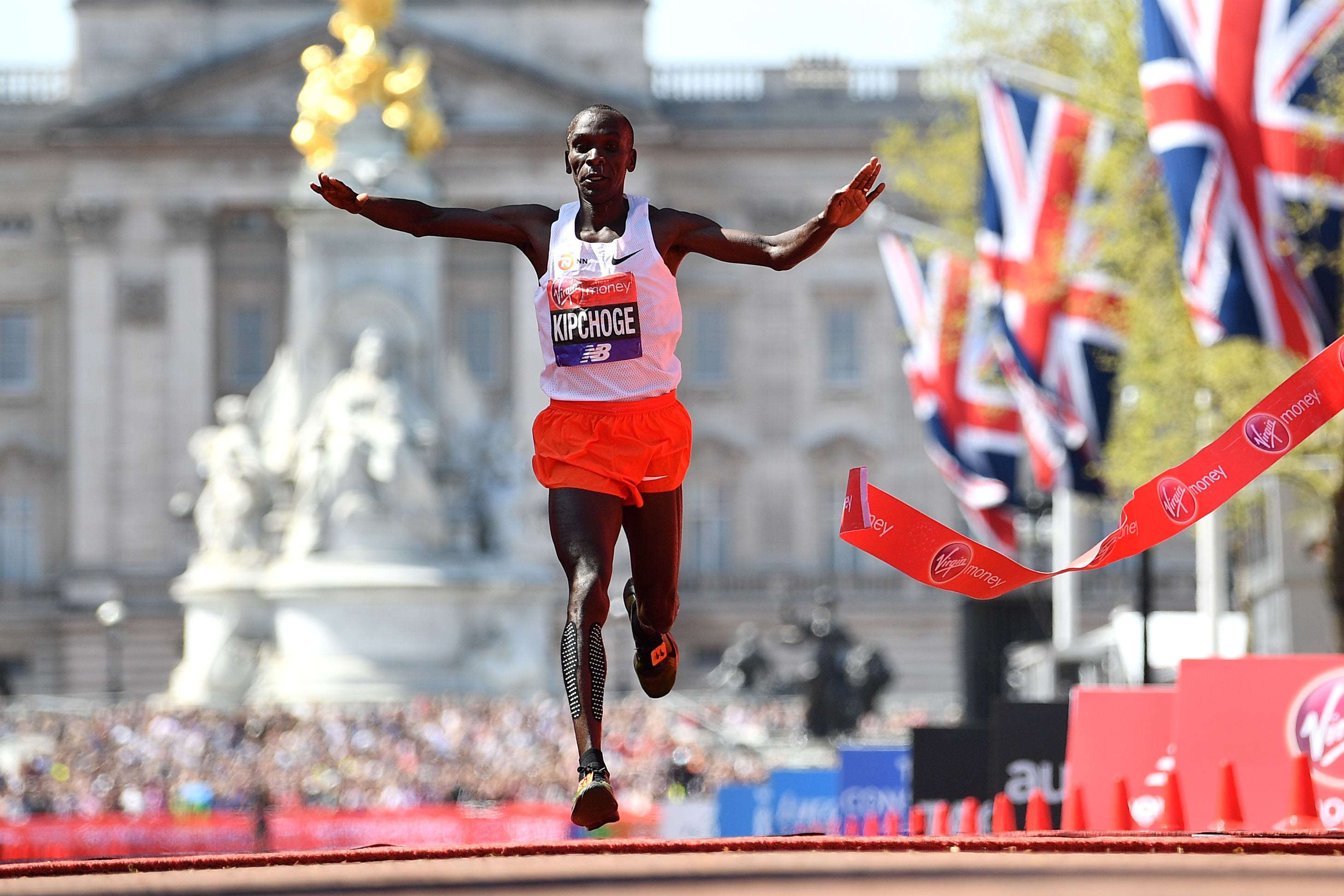
Has what he achieved in Vienna in fact given him the confidence that anything is possible?
“Absolutely, yes.”
Kipchoge is undoubtedly the dominant force in world marathon and his achievements have gained recognition across the globe, with the 35-year-old currently in Britain to attend the BBC Sports Personality of the Year, where he will receive the World Sport Star of the Year award.
He is feted as a hero, too, in his native country, where he received a very different kind of medal.
“Everyone in Kenya is recognising me,” he said. “I can say it is a crazy time. There was no need for a big procession because the president honoured me with the national certificate. I was given the honour – the golden heart – the highest recognition by the Head of State.”
(12/15/19) Views: 65Euan Crumley (Athletics Weekly)
Rachel Cliff sets new Canadian half-marathon record at the Sanyo´s Ladies Road Race
Rachel Cliff beat her own personal best to to set the new Canadian half-marathon record. It is also her fourth time setting a Canadian record in 2019.
At the Sanyo Ladies' Half-Marathon in Okayama, Japan, Cliff finished in sixth place but did so with a time of 1:10:06, beating her previous record of 1:10:08 that she accomplished in 2018 at the Woodlands Half-Marathon. Charlotte Purdue of England won the race with a time of 1:08:48 followed by Honami Maeda of Japan taking second clocking in at 1:09:08.
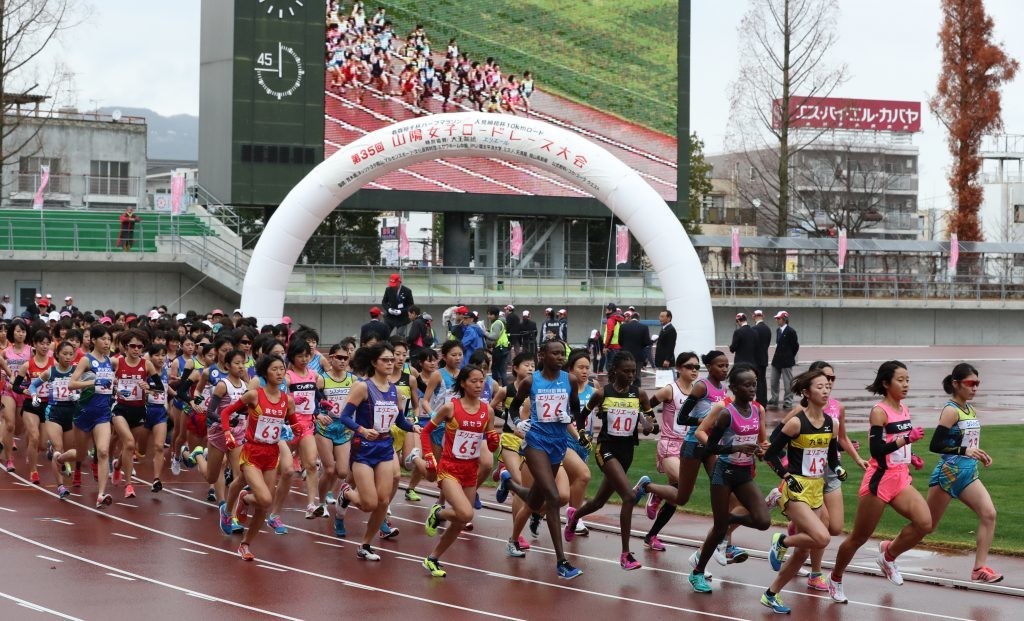
Cliff set the Canadian 25K, 30K and marathon records at the Nagoya Women's Marathon earlier this year. The Vancouver native is searching to be apart of the Tokyo Olympics after she was left off the team in 2016 Olympic team.
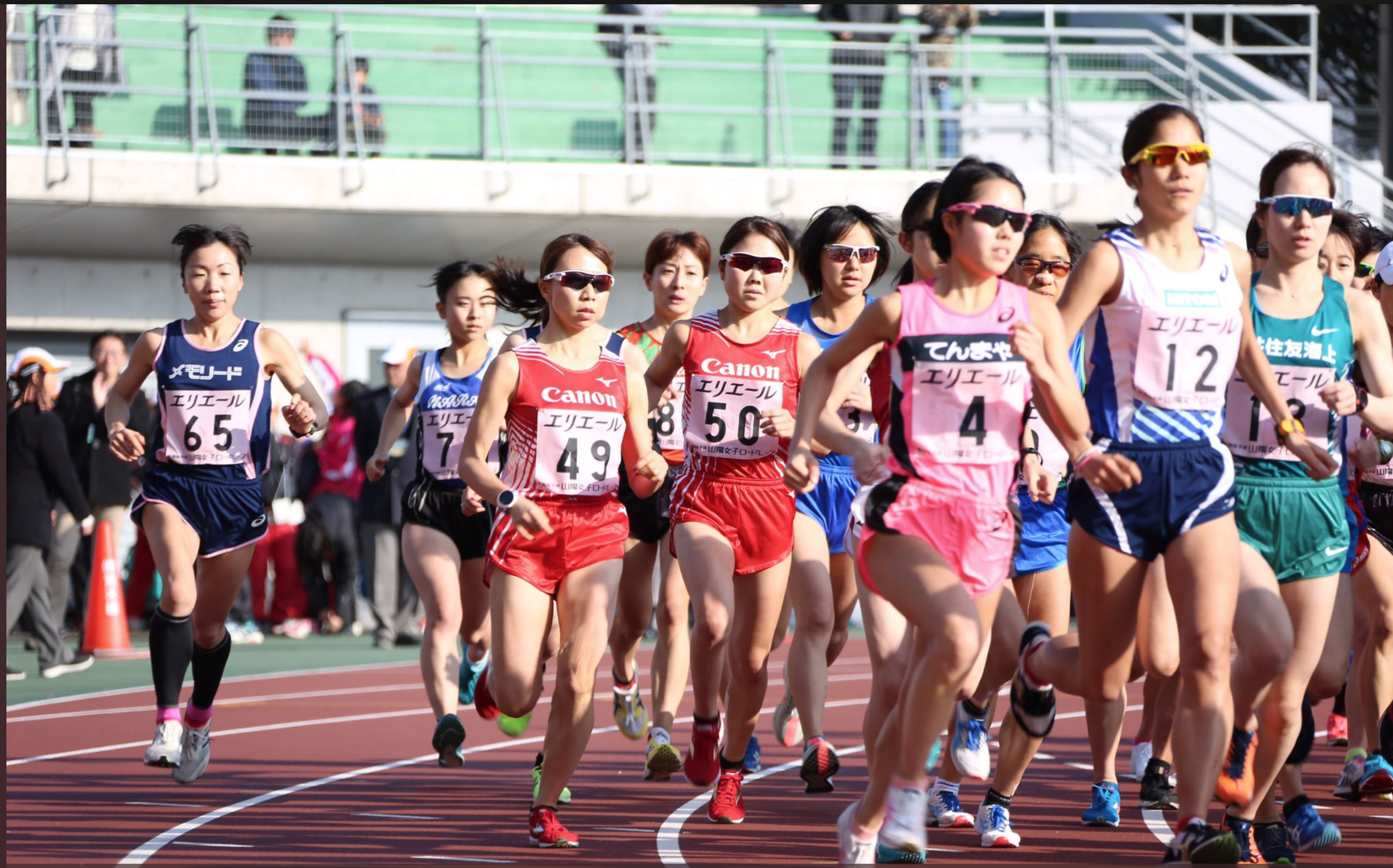
The 31-year-old also won bronze in the 10,000 metre at the 2019 Pan-Am games in Peru.
Cliff was the lone Canadian in the top-10 at the Sanyo Ladies' Half-Marathon.
(12/16/19) Views: 62$12 million raised to battle childhood cancer, other life-threatening diseases at St. Jude Memphis Marathon
This year, 26,000 participants from all 50 states and 17 foreign countries gathered in the Bluff City alongside 40,000 spectators for the 18th annual St. Jude Memphis Marathon® Weekend presented by Juice Plus+®. Among this year’s participants were more than 7,200 St. Jude Heroes who raised $12 million to support St. Jude Children’s Research Hospital®.
One such St. Jude Hero, Adam Higham, became the 2019 top marathoner. The Collierville, Tennessee resident finished first this year with a time of 2:29:17. Since running his first marathon here in 2012, Higham has steadily worked his way to the top – having earned seventh place in 2015, then working up to second place in both 2016 and 2017.
“In the 18 years of St. Jude Memphis Marathon Weekend, more than 250,000 runners have come from across the country and around the world to embrace our great city and provide hope for our patient families in what can be the darkest time of their lives. Watching these tens of thousands of dedicated athletes running for a reason and raising more than $90 million in since the event’s inception reminds us of the power of people of every background to unite together to change the lives of those most vulnerable: our sick children from across the globe,” said Richard Shadyac Jr., President and CEO of ALSAC, the fundraising and awareness organization for St. Jude Children’s Research Hospital.
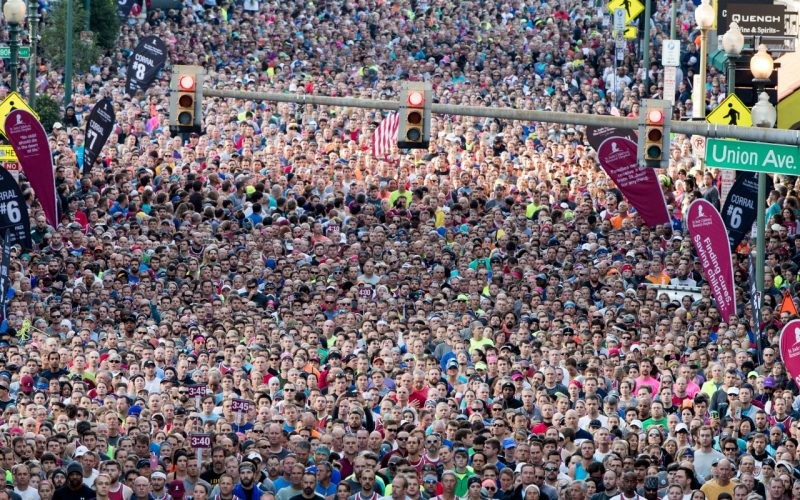
“We offer our most heartfelt gratitude to Adam and to all of the devoted St. Jude Heroes, volunteers, partners, safety officials and supporters who helped make this year’s race weekend the best yet.”
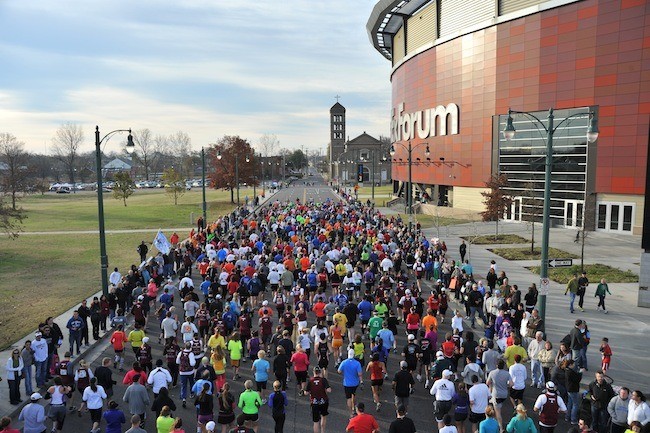
Tia Stone of Searcy, Arkansas was the first female to cross the marathon finish line with a time of 2:58:20. Pius Nyatika of Memphis, Tennessee was the top male half marathoner, and set a new half marathon course record with a time of 1:04:20. Rebecca Robinson of Windermere, Cumbria, England was this year’s first female half marathoner with a time of 1:16:17.
The first to cross the 10K finish line was Dylan Hassett (female) of Alpharetta, Georgia with a time of 34:29. Shortly after, Owen, a St. Jude patient from Jonesboro, Arkansas finished with a time of 40:27. Tyler Pasley of Shelbyville, Illinois – 2018’s top 10K finisher – lead this year’s 5K with a time of 16:04, while Amber Douglas of Camden, Tennessee crossed as this year’s top female 5K finisher with a time of 21:13.
Since its inception in 2002, St. Jude Memphis Marathon Weekend has helped raise more than $90 million to support the lifesaving mission of St. Jude: Finding cures. Saving children.® Events like this help ensure no family at St. Jude receives a bill for treatment, travel, housing or food – because all a family should worry about is helping their child live.
The 2019 event weekend was made possible with the support of 4,000 volunteers; more than 20 sponsors, including Juice Plus+, Landers Auto Group, Blue Cross Blue Shield of Tennessee, AutoZone, Lancôme, Shaw Floors, American Airlines, Campbell Clinic, FedEx, Kroger, Mitsubishi Electric, My Salon Suite, My Town Movers, Prairie Farms and more; partners Breakaway Running, Downtown Memphis Commission, the City of Memphis, Memphis Runners Track Club and National Black Marathoners Association; as well as national St. Jude Heroes coach Kevin Leathers.
(12/16/19) Views: 61John Hancock and the Boston Athletic Association announced 16 Boston marathon champions will be running the 2020 Boston Marathon
In a joint statement this morning, John Hancock and the Boston Athletic Association announced that sixteen prior race champions, including 2018 winner Desiree Linden, would run the 2020 Boston Marathon scheduled for Monday, April 20. The 2020 race, always held on the third Monday in April, will be the 124th running of the world’s oldest marathon.
“In our 35th year as principal sponsor of this historic race, we are excited to welcome back our accomplished champions,” said John Hancock chief marketing officer Barbara Goose through a statement. “Their return is a testimony to the tradition and legacy that is the Boston Marathon. These champions are not just racing each other, they are chasing history.”
While today’s announcement included the race’s four open and wheelchair division champions from 2019 –Lawrence Cherono of Kenya, Worknesh Degefa of Ethiopia, Manuela Schär of Switzerland and Daniel Romanchuk of the United States– it is the inclusion of Linden, a two-time Olympian, which will likely get the most attention, at least domestically. Linden, 36, who won the bitterly cold and rain-soaked edition of the race in 2018 where three quarters of the elite field couldn’t finish, will run Boston for the eight time. Moreover, she plans to double back from the USA Olympic Team Trials Marathon which will take place 51 days earlier in Atlanta on February 29. A top-3 finish there would put her on her third Olympic team.
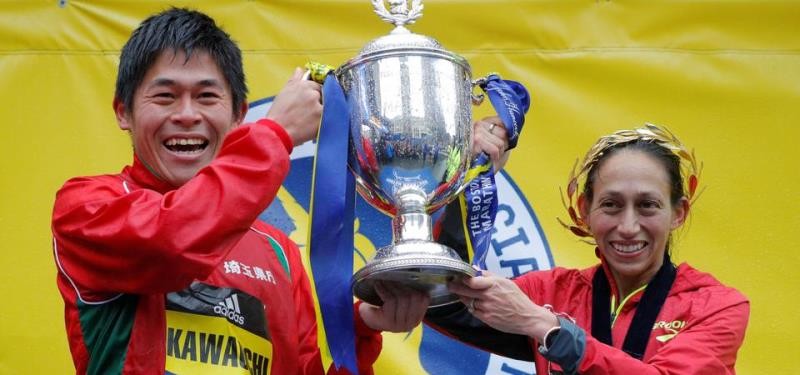
“Running the Boston Marathon seven weeks after the U.S. Olympic Trials is a plan that has been in the works for roughly a year,” Linden explained in a written statement. “I crossed the finish line in 2019 and knew if my body was capable, I wanted to return to Boston in 2020. My coach, Walt Drenth, and I had some long conversations on doing the double, how we would tailor the training, and if it was reasonable to expect to run well in both races. We were both excited about the challenge.”

Linden’s marathon career began inauspiciously in Boston in 2007 when she finished 18th in 2:44:56, a time which would only have qualified her for next year’s Olympic Trials by four seconds. But when she returned to the race in 2011, she was a different athlete, nearly winning in a personal best 2:22:38 after a thrilling three-way battle against Kenya’s Caroline Kilel and Sharon Cherop on Boylston Street. Kilel got the win in 2:22:36, just two seconds ahead of Linden and six seconds ahead of Cherop.
Other prior race champions in the open division announced for the 2020 marathon were Yuki Kawauchi of Japan (first in 2018); Edna Kiplagat (2017), Geoffrey Kirui (2017), and Caroline Rotich of Kenya (2015); and Lelisa Desisa of Ethiopia (2013 and 2015), the reigning World Athletics marathon champion. Prior wheelchair division champions who have entered were Tatyana McFadden of the United States (2013 – 2016, 2018), Marcel Hug of Switzerland (2015 – 2018), Ernst van Dyk of South Africa (2011 – 2016, 2008 – 2010, 2014), Hiroyuki Yamamoto (2013) and Masazumi Soejima (2007 and 2011) of Japan, and Josh Cassidy of Canada (2012).
“The race for the tape on Patriots’ Day will surely be both competitive and compelling, as John Hancock has fielded a tremendous team of champions,” said Tom Grilk, the B.A.A. CEO. “With 16 returning champions, the roads leading to Boston will be filled with many of the most decorated runners and wheelchair racers in history. Another memorable chapter in Boston Marathon history will surely unfold on April 20.”
The Boston Marathon –which recorded 26,632 finishers in 2019– is part of the Abbott World Marathon Majors, a confederation of the world’s top marathons, and is also a World Athletics Platinum Label road race. The Platinum Label is new for 2020 and has been given only to a super-elite group of eight marathons so far: Tokyo, Nagoya Women’s, Seoul, Boston, London, Berlin, Chicago and New York (two to four more may be added, according to World Athletics).
(12/17/19) Views: 59David Monti


